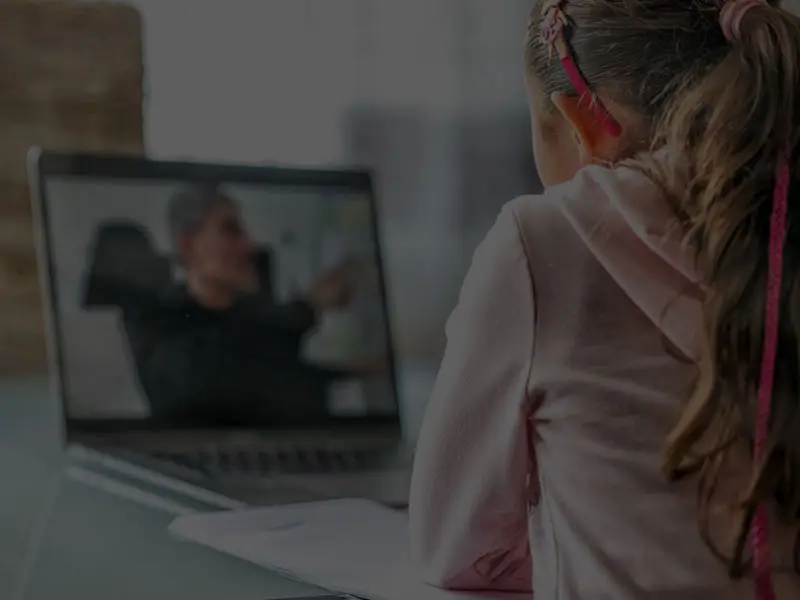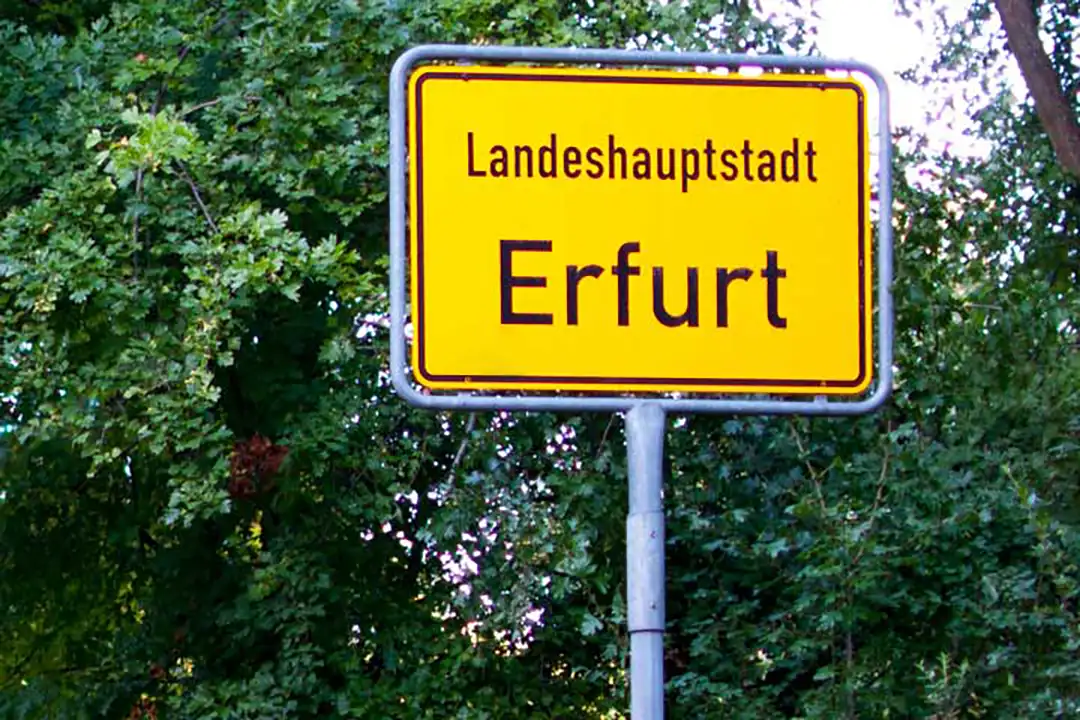
The online seminar tool BigBlueButton* is ideal for organising video conferences at companies and schools, while the online learning platform Moodle™ is centrally focused on distance learning and offers ideal opportunities to coordinate courses and teaching classes online. A combination of both tools forms a fully comprehensive learning environment for distance learning and further education institutes.
Whether you want to build a secure base for business meetings or distance learning, or combine the two, with Online Seminar Hosting we can work together to find the right solution to efficiently maintain internal interactions from anywhere.
The Online seminar hosting is recommended by our experts for:
Our BBB Hosting* packages from Keyweb are equipped with the functional and browser-based open source application BigBlueButton*. With features such as a digital whiteboard, chat & video chat, screen sharing or the sharing of documents and notes, it offers numerous possibilities to make knowledge transfer in online seminars interactive, efficient and simple.
For smooth execution of the curriculum, a digital learning platform can be set up in minutes thanks to Moodle™. With extensive features such as course management, file sharing, email communication and the easy integration of the BigBlueButton* video conferencing tool, Moodle™ creates a secure learning environment for collaborative and location-independent learning.

No matter whether you want to hold short meetings in your company or teach several school classes at the same time with the help of BBB hosting. Our BBB rates should be as individual as your needs.
Not sure which tariff is right for you? Let's find out together so that you can master your services digitally just as well as analogue.
If required, a combination of the Moodle™ learning platform and the online seminar tool BigBlueButton* is also possible.
+49 361/6 58 53-55
Monday to Friday
8 am to 5 pm
Contact now by
email:
sales@keyweb.de
Start a chat now, simply click on the button at the bottom right.
We are happy to answer frequently asked questions about hosting for the BBB tool.
You will also find a lot of additional information about the online seminar hosting solution in our FAQ.
If you want to set up a digital learning environment in which you can create and manage teaching classes or courses for online exchange, Moodle is ideal. Since Moodle does not have its own video conference function, BigBlueButton can be easily integrated as a plugin. You are already able to teach or hold seminars online using video conferencing.
If you are only looking for a stable basis for interactive communication and the implementation of online seminars and meetings using video conferences, then BigBlueButton is the right solution as an online seminar tool.
Up to 100 users can participate in a conference. It does not matter whether you hold a conference with 100 and one with 50 participants or three conferences with 50 participants each at the same time in the M tariff. Your simultaneous connections can be freely divided for all tariffs.
You can start as many conferences as your chosen tariff allows. At least two users must participate in a session.
All PCs, smartphones, tablets and Chromebooks that can run the latest version of Chrome, Firefox, Safari or Chrome-based browsers are compatible. The bandwidth should be at least 1 Mbit in the download and 0.5 Mbit in the upload.
Yes. Your smartphone must be equipped with at least Android 6.0 or iOS 12.2. All functions except for sharing the screen are also available on the smartphone.
Keyweb's professional support is available around the clock to answer any technical questions you may have about your BBB hosting.

We focus on sustainability in every respect. By consistently acting consciously. This is confirmed by the German Institute for Sustainability and Economics.

Their servers are housed in Keyweb AG's own TÜV-certified data centers in the middle of Germany and are subject to German data protection and the GDPR.
|
BBB S
|
BBB M
|
BBB L
|
BBB XL
|
BBB XXL
|
|
|---|---|---|---|---|---|
|
Assured storage space
|
1TB RAID1 | 1TB RAID1 | 2TB RAID1 | 4TB RAID1 | Upon request |
|
Greenlight
|
very clear web interface, intuitive operation | ||||
|
Data transmission
|
via drag & drop or file browser via web interface | ||||
|
User
|
unlimited | ||||
|
Video & Audio Calling
|
|||||
|
Whiteboard
|
|||||
|
Chat function
|
|||||
|
Screen sharing
|
|||||
|
Digital survey feature
|
|||||
|
Slide presentation
|
|||||
|
Manage rooms
|
|||||
|
Whitelabel capability
|
|||||
|
BBB S
|
BBB M
|
BBB L
|
BBB XL
|
BBB XXL
|
|
|---|---|---|---|---|---|
|
SSL encryption
|
included | ||||
|
Network availability
|
99.00 % | ||||
|
Dedicated Keymachine® Server
|
|||||
|
BBB S
|
BBB M
|
BBB L
|
BBB XL
|
BBB XXL
|
|
|---|---|---|---|---|---|
|
Minimum contract period
|
1 Month | ||||
|
Notice period
|
14 days to the end of the contract | ||||
|
Payment method
|
Debit, Credit Card, Bank Transfer, PayPal | ||||
|
Billing period
|
monthly, quarterly, semi-annually, annually, 24 months | ||||
| up to 20% discount on your online seminar hosting | |||||
|
Assured storage space
|
|
|---|---|
| BBB S | 1TB RAID1 |
| BBB M | 1TB RAID1 |
| BBB L | 2TB RAID1 |
| BBB XL | 4TB RAID1 |
| BBB XXL | Upon request |
Greenlight
|
| All products | very clear web interface, intuitive operation |
Data transmission
|
| All products | via drag & drop or file browser via web interface |
User
|
| All products | unlimited |
Video & Audio Calling
|
| BBB S | |
| BBB M | |
| BBB L | |
| BBB XL | |
| BBB XXL |
Whiteboard
|
| BBB S | |
| BBB M | |
| BBB L | |
| BBB XL | |
| BBB XXL |
Chat function
|
| BBB S | |
| BBB M | |
| BBB L | |
| BBB XL | |
| BBB XXL |
Screen sharing
|
| BBB S | |
| BBB M | |
| BBB L | |
| BBB XL | |
| BBB XXL |
Digital survey feature
|
| BBB S | |
| BBB M | |
| BBB L | |
| BBB XL | |
| BBB XXL |
Slide presentation
|
| BBB S | |
| BBB M | |
| BBB L | |
| BBB XL | |
| BBB XXL |
Manage rooms
|
| BBB S | |
| BBB M | |
| BBB L | |
| BBB XL | |
| BBB XXL |
Whitelabel capability
|
| BBB S | |
| BBB M | |
| BBB L | |
| BBB XL | |
| BBB XXL |
|
TURN Server
|
|
|---|---|
| BBB S | |
| BBB M | |
| BBB L | |
| BBB XL | |
| BBB XXL |
Domain
|
| All products | own or Keymachine.eu for example |
Access
|
| All products | via internet browser via https |
Traffic
|
| All products | included |
Limitations
|
| All products | max. 100 users per room |
|
Drupal
|
|
|---|---|
| BBB S | |
| BBB M | |
| BBB L | |
| BBB XL | |
| BBB XXL |
Moodle™
|
| BBB S | |
| BBB M | |
| BBB L | |
| BBB XL | |
| BBB XXL |
NextCloud Talk
|
| BBB S | |
| BBB M | |
| BBB L | |
| BBB XL | |
| BBB XXL |
Wordpress
|
| BBB S | |
| BBB M | |
| BBB L | |
| BBB XL | |
| BBB XXL |
|
SSL encryption
|
|
|---|---|
| All products | included |
| BBB S | |
| BBB M | |
| BBB L | |
| BBB XL | |
| BBB XXL | |
| BBB S | |
| BBB M | |
| BBB L | |
| BBB XL | |
| BBB XXL |
Network availability
|
| All products | 99.00 % |
Dedicated Keymachine® Server
|
| BBB S | |
| BBB M | |
| BBB L | |
| BBB XL | |
| BBB XXL |
|
24/7 - ticket system
|
|
|---|---|
| BBB S | |
| BBB M | |
| BBB L | |
| BBB XL | |
| BBB XXL |
24/7 - availability by phone
|
| BBB S | |
| BBB M | |
| BBB L | |
| BBB XL | |
| BBB XXL |
E-mail service & personal consultation
|
| BBB S | |
| BBB M | |
| BBB L | |
| BBB XL | |
| BBB XXL |
Live-Chat
|
| BBB S | |
| BBB M | |
| BBB L | |
| BBB XL | |
| BBB XXL | |
| All products | Managed Service inklusive, Managed Pro Service optional hinzubuchbar |
|
Minimum contract period
|
|
|---|---|
| All products | 1 Month |
Notice period
|
| All products | 14 days to the end of the contract |
Payment method
|
| All products | Debit, Credit Card, Bank Transfer, PayPal |
Billing period
|
| All products | monthly, quarterly, semi-annually, annually, 24 months |
| All products | up to 20% discount on your online seminar hosting |
1The gross prices stated apply to consumers and include 19% VAT for Germany, other EU countries may differ. Charges are payable in advance for the respective billing period.